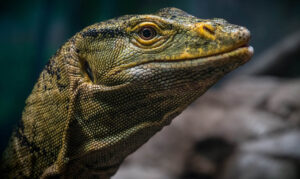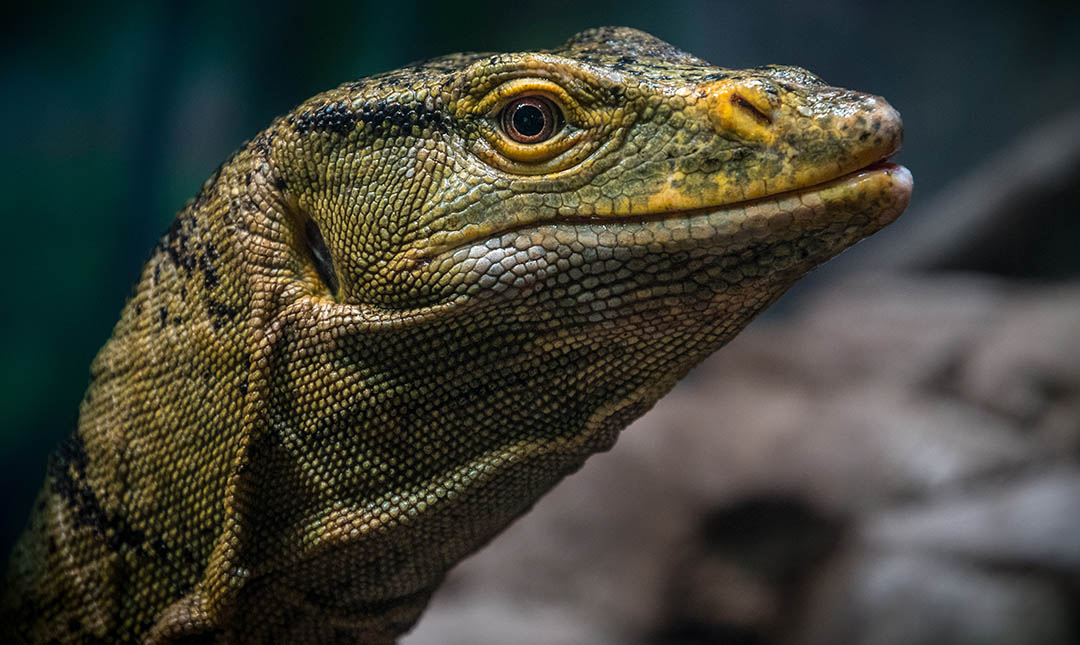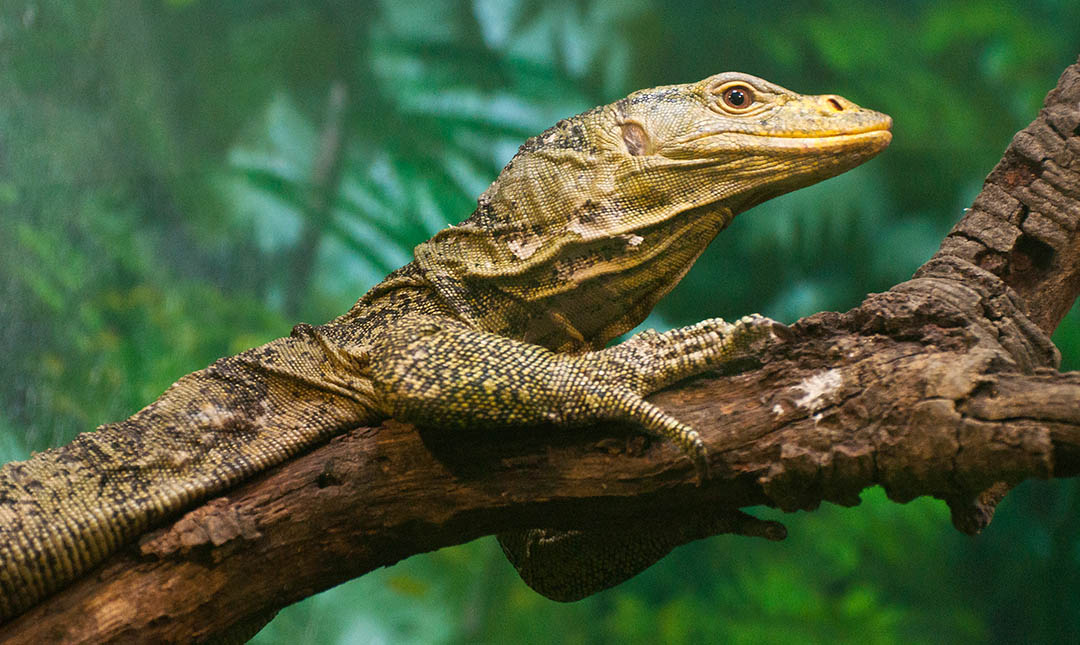About
Until its rediscovery in the 1980s, this monitor lizard species was believed to be extinct. The Zoo’s success in breeding this rare and poorly understood reptile in 2014 was lauded by Daniel Bennett, the world’s foremost expert in this lizard family as “the most significant breakthrough in monitor lizard husbandry this century.”
A Very Big Family
The monitor lizard genus, Varanus, contains more than 56 species that range in size from the eight-inch pygmy monitors of Australia to Indonesia’s Komodo dragon, which can weigh up to 200 pounds. Monitors are found primarily in Asia, Africa, and Australia, and despite varying dramatically in size, share many physical characteristics including a forked tongue, similar to those of snakes, and a heart that gives their blood higher oxygen levels than other lizards. Butaans are distinctive in that they are primarily arboreal and consume a diet that is made up primarily of fruit.


Habitat
Butaans are found on only a few of the Philippine islands, primarily on Luzon and Polillo. They spend most of their time in tree canopies.
Diet
The butaan belongs to a small group of Asian monitors that eat fruit as the main part of their diet. Juveniles eat snails, crabs, and insects, continuing to do so into adulthood as a supplement to fruit.
Physical Characteristics
The butaan is one of the largest lizards in Asia, growing up to five feet in length from nose to tail and weighing up to 20 pounds. Olive green and gray banding provides cryptic coloration that helps these lizards blend into their surroundings and avoid detection. Well-developed claws that help them navigate the tree canopy and forage for fruit. Unlike other monitor lizards, butaan teeth are blunt, which aids in picking fruit and crushing snails.


